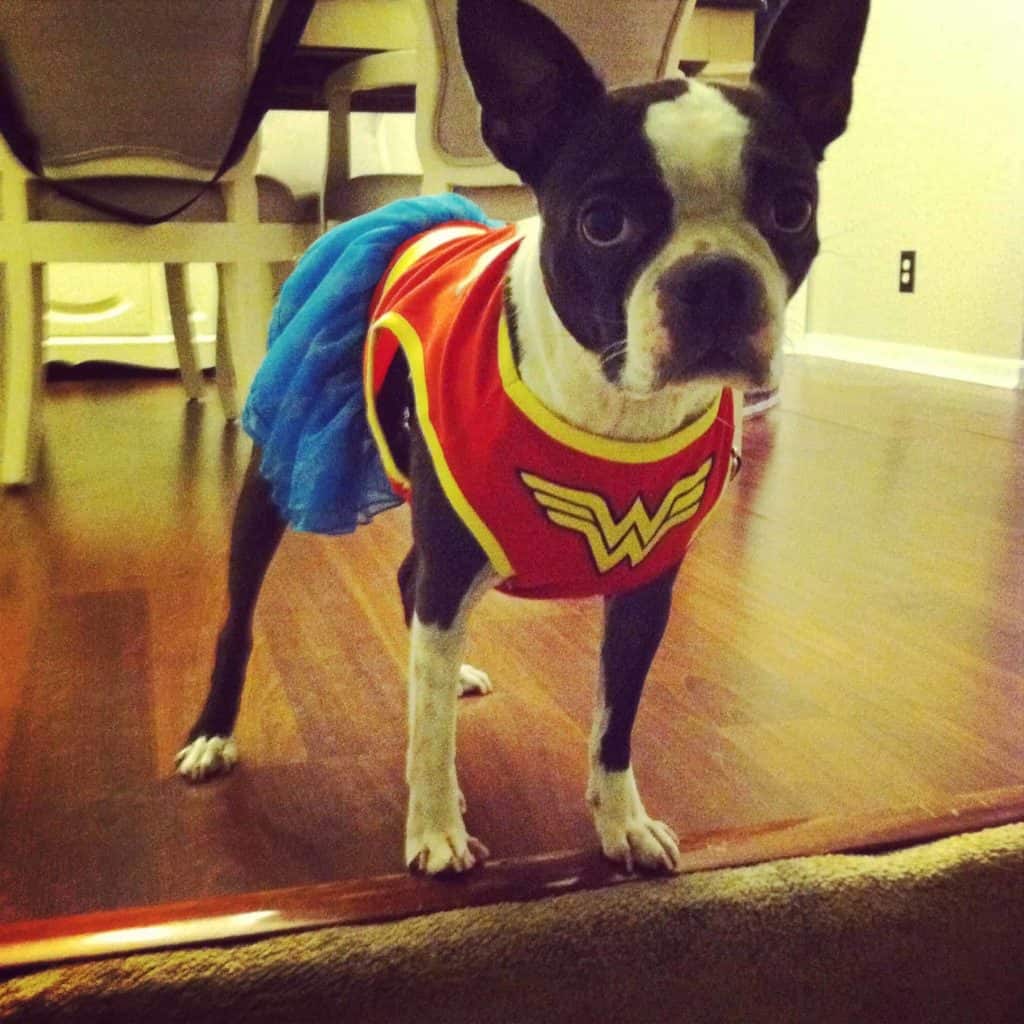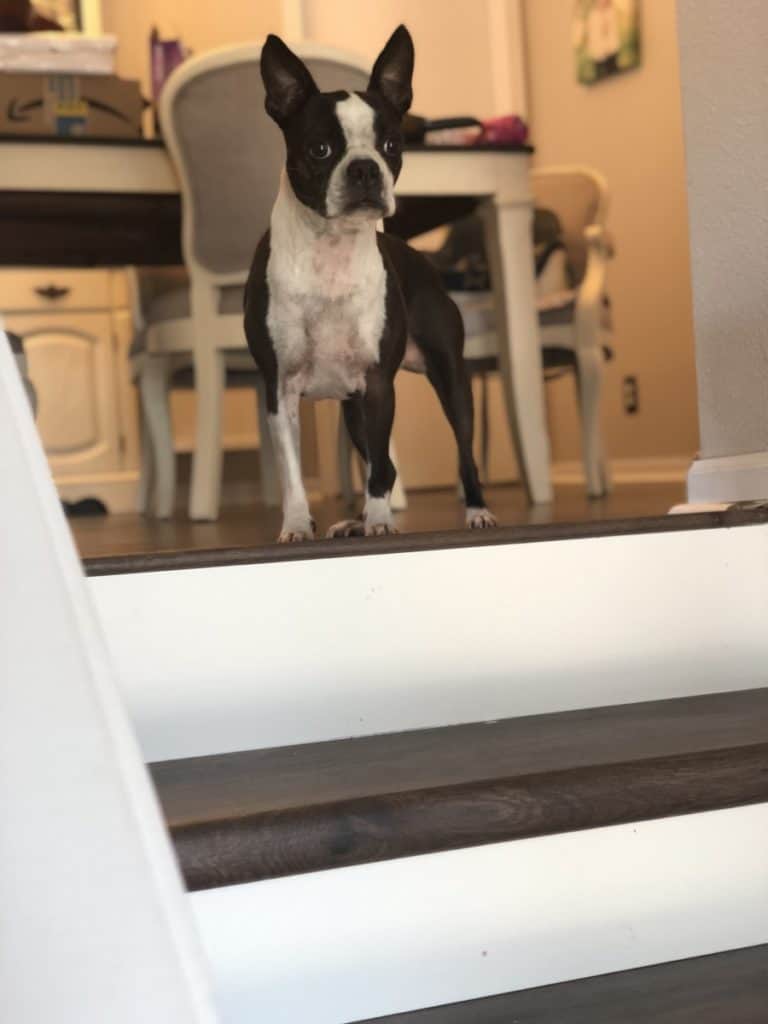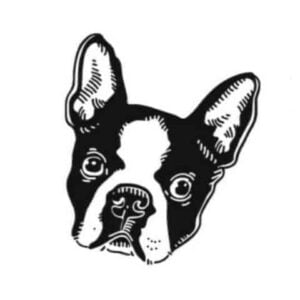If you own a purebred Boston Terrier or another breed, you may be curious about your dog’s family history or bloodlines.
Just as many people have become interested in their family ancestries, many dog owners are also eager to learn about their dog’s backgrounds.
Every purebred dog should have recorded documentation of his pedigree. But what is a pedigree, why is it important, and how can you get a copy if you don’t already have it?
Here is what I found out…

What does pedigree mean, and why is it important to have?
A pedigree is a window into your dog’s past. This record provides information about your dog’s family tree, including his parents, grandparents, and great-grandparents. When you purchase a purebred puppy from a breeder, the puppy’s pedigree should be included with his registration papers. Some breeders, especially those who have bred dogs for years, may consist of a lineage that goes back three to five generations or more.
Why is pedigree important?
Some dog owners may question why it is important to have a copy of their purebred dog’s pedigree. The pedigree gives you critical information about your dog’s history and can be helpful for your dog’s future and your understanding of his behaviors and personality. Every dog who appears on your dog’s pedigree has contributed to your dog’s genetic makeup. This impacts your puppy’s conformation (shape or structure), temperament, and overall soundness.
Health is also something to keep in mind when looking at a dog’s pedigree. Ideally, breeders have used previous generations to breed out poor genetic health factors selectively. However, with some breeds, like the Boston Terrier, there’s no escaping inherited health conditions and traits.
This doesn’t mean you shouldn’t adopt or purchase that dog. It means you can have more insight into what future health scenarios your dog may develop. Some organizations that provide pedigree services, such as the American Kennel Club (AKC), have started using DNA analysis. The DNA tests are used on the males who are frequently bred, those who have produced three litters in a calendar year, or seven litters total. This process is only at its beginning, but further advancements in DNA will hopefully provide more information for breeders, showers, and owners soon.
Medical Clearance
Currently, a dog’s pedigree can show a certification of medical clearance in the following areas:
- OFA (Orthopedic Foundation for Animals) abbreviation on a dog’s lineage indicates that the dog has been examined for hip dysplasia and has been given a grade of E (excellent), G (good), or F (fair).
- OFAL (Orthopedic Foundation for Animals) abbreviation for a dog’s clearance for elbow dysplasia. Only the OFAL acronym will indicate that the dog passed this examination.
- EYE abbreviation indicates the dog has passed his eye examination and was free of eye disease at the time of testing.
Although these certifications do not guarantee a dog free of heritable medical conditions, it does show that your dog is less likely to experience these issues.

What does a pedigree do for a potential show dog?
Owners who intend to show their puppy when he grows up will want to scrutinize his pedigree. A purebred dog pedigree indicates the dog’s value as a potential winner in the show ring. Coat colors are of particular importance as they will need to meet the breed’s American Kennel Club standard to participate in shows.
Colors
Either complete descriptions or abbreviations will indicate a dog’s coloring. For example, a Boston Terrier and his ancestors will have descriptions under each name on the pedigree specifying color, such as:
- Dark brindle and white
- Brindle and white
- Black brindle and white
- Black and white
- Seal brindle and white
If similar coat colors appear throughout the pedigrees, then puppies born of that pedigree line are highly likely to be that color. A lineage that includes an ancestor who is a different color means that a puppy bred from this line may end up with a beautiful coat, but potentially be disqualified from the show ring. The same may happen with puppies who end up with different coat lengths and patterns.
Ancestors Achievements
If you eventually plan on showing your puppy, you will want to see what titles and awards his parents and other ancestors have won. Any awards and titles that your dog’s family members have earned at qualified AKC events become part of those dogs’ permanent AKC records. Abbreviations next to the dog’s name indicate the level of titles won. Some of the most commonly recognized abbreviations amongst major kennel clubs are the following:
- CH – Champion in a Conformation Show
- CD – Companion Dog
- FC – Champion in the Field
- NFC – National Field Champion
- CT – Champion Tracker
- GCH – Grand Champion
- HC – Herding Champion
- MACH – Master Agility Champion
- NAC – National Agility Champion
Dogs with letters behind their names are those who have won specific awards and certifications. For example, a dog with a “CD” after his name was formally certified as a companion dog. For breeders who are producing puppies as family companions more than show dogs, a CD designation speaks volumes about the temperament of the puppies that will come from that particular bloodline.
Where can I check my dog’s pedigree?
If you have adopted or purchased a purebred dog, you should already have a copy of your dog’s pedigree given to you by the breeder. Also, you should have received your dog’s registration number, assigned to his litter by the breeder. Speak with the breeder who bred your puppy if you didn’t receive this information or if you lost it and need another copy.
For puppies purchased from pet stores, you will need to ask the store for the dog’s registration paperwork and learn the state in which the dog was bred.
Check out these sites for your dog’s pedigree:
Dog Pedigrees is a free online site. However, it is like Wikipedia random people put in their dog’s ancestry. When I looked for Bella, my Boston, she was not in there.
What you will need
Registration Number
The dog’s registration will have the assigned litter registration number on it. With the registration number, you can contact the AKC or other online pedigree sites such as Pedigree Online. These two places can provide you copies of your dog’s pedigree for a fee or for free. The AKC can usually provide documentation four to five generations back in pedigrees.
No Certificate
Even if you don’t have the original registration certificate for your puppy, you can still contact the AKC staff to help you find your dog’s pedigree. It may take longer and cost a bit more for the extra research, but in most cases, pedigrees can be recovered. With the AKC, copies of genealogies start at $34.00. Contact your local or national kennel club for your dog’s specific breed for information on costs associated with pedigree paperwork.
How do I read my dog’s pedigree?
Once you have your dog’s pedigree, it’s easy to follow it. Pedigrees are formatted like an extended family tree, and your dog’s name will be listed first on the left-hand side. His information should include his breed, registration number, and coloring or physical description.
The upper part of your dog’s pedigree will consist of his sire’s, or father’s ancestry. The sire should have his full name, registration number, and sometimes a short narrative on the dog. The other dogs in the sire’s lineage should be listed similarly. If you see a dog’s name repeated in this part of the pedigree, it isn’t an error. Linebreeding is a means of selectively breeding a dog to a more distant family member, like a cousin, to cement desirable traits in the breeding line.
The bottom half of your dog’s pedigree will be the dam or mother’s ancestry. The dam’s information should also include her name, registration number, and any notes about the litter the dam came from. Additional notes about birthing issues or breeding concerns may also be included with the dam’s information. Her family line will also include relevant information about her ancestors.
Any titles, awards, or certifications that your dog’s ancestors have earned or won will be indicated either before or after their name.
Pedigree information is mainly relevant to purebred dogs, but not exclusively. Although possession of a pedigree is something that benefits owners of purebred dogs, especially if they intend to show those dogs. Pedigrees can also be helpful to know a mixed breed or designer breed dog’s pedigree. Most crossbreed or designer dogs, like Goldendoodles or Cockapoos, have been created to eliminate many of the health conditions associated with the parent breeds.
Unfortunately, in some cases, those genetic lines have resulted in new medical issues. It may be helpful to have a record of the dog’s parents to prepare for any future problems.
Are there DNA tests for dogs?
DNA tests for dogs have become a popular means to determine what breed your dog is. Depending on the depth of the analysis, the results can tell you what potential health issues he is prone to develop. There are a variety of companies that offer these tests. And while they are a fun way to learn your dog’s ancestry, they can also help you develop a health plan for his life.
Dog DNA Companies:
- Embark Breed & Ancestry
- Wisdom Panel
- DNA My Dog
- Other Home DNA Tests – check them out along with pricing on Amazon, Home Dog DNA Tests.
*Note: I do have an affiliate relationship with Embark.
How to do it?
DNA tests for dogs are relatively simple. Just swab your dog’s cheek then submit the sample in the company-provided container. Mail the sample back to the company in a prepaid envelope. Within a few weeks, you will receive a report that will give you information on your dog’s genetic breakdown. If you chose a health report, a readout on diseases, your dog might have inherited as well.
Costs
Most DNA tests cost between $40 – $200, depending on how much information you want about your dog. Typically, the more extensive the company’s database, the better the results. DNA tests can be especially necessary for owners of crossbreed, designer, or mixed breed dogs.
What do I get out of a DNA test versus Pedigree Search?
DNA tests can provide valuable information about your dog, but do not mistake it for a pedigree. What the lineage provides — direct information about your dog’s parents, grandparents, and great-grandparents — cannot be found in a DNA test. You may decide that you want both a pedigree and a DNA test to cover all the bases on your dog’s ancestry.
Final thoughts…
Whether you plan to show your puppy in the ring or you just want to be better prepared for potential health problems, having a copy of your puppy’s pedigree is a good idea. If your dog’s breeder doesn’t provide you with a copy, you can get a copy from a variety of sources. More information is always vital to know what kind of dog you are adopting and helpful in planning a happy future with your pup.
